A small boat navigated through the rocks jutting out of the Betwa river’s turbulent surface. Men and women disembarked at the crossing near Mainwara, a village in Uttar Pradesh, holding large jute and plastic bags, and joined their families by a bonfire on the riverbank. There was no respite for the boatman: on the other side, more people with similar bags were waiting.
Somewhere in the middle of the river, the boat crosses between Madhya Pradesh in central India and the northern state of Uttar Pradesh. The Betwa is a tributary of the Yamuna in the Ganga basin and sits on the border of the two states at this point. The boatman makes this journey about 30 times a day, primarily carrying indigenous people looking for produce in the forests.
“There are no more forests left on this [the Uttar Pradesh] side of the river,” said Devi. She is a member of the Sahariya community, a Scheduled Tribe (indigenous communities recognised as “tribal” by the Indian state under the Constitution) and lives in a hamlet in Uttar Pradesh. She said, “There are some patches [of forest] still left in the Madhya Pradesh side and we have to go there daily to forage for our plants.”
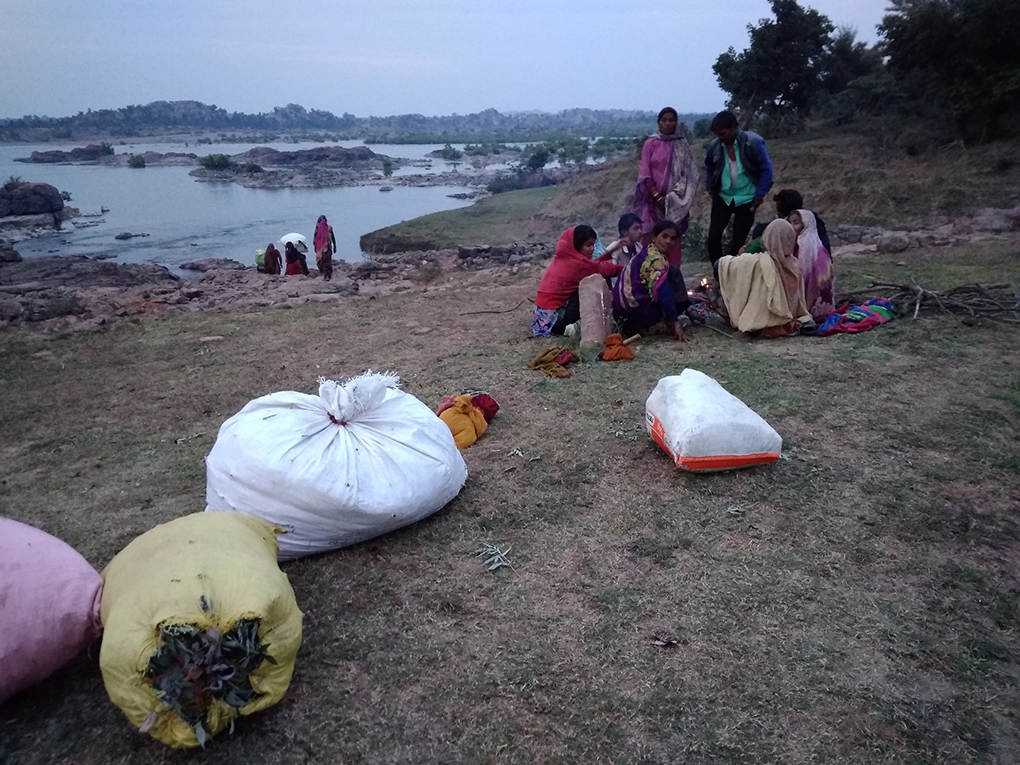
The Sahariya have traditionally depended on forests for their livelihoods. Three decades ago, researchers documented Sahariya communities using 72 species of plants for medicinal purposes or as food. The bags of those crossing the river were filled with niyagar leaves (Vitex negundo), which is used to alleviate toothache and labour pain.

A few kilometres downstream, Uttam Kumar and his family live in a cluster of traditional houses. “We were allotted government housing in the village, but we felt the village was too cramped. We adivasis [indigenous people] like our space and to be closer to nature,” Kumar said.
But forests are hard to find – not just around his home but across Bundelkhand, an arid, hilly region straddling the border between Uttar Pradesh and Madhya Pradesh.
Kumar said, “There used to be a lot of forests around us. Over the years, people from outside, with big machines and trucks, cut down the trees.”
Kumar’s family owns a small plot of farmland, and earns a living selling commonly-found plants. His father has a vast traditional knowledge of plants; he passed on some of this, such as how to treat minor illnesses and wounds, to his son. While hazar dana (a medicinal herb) is no longer found by the banks of the Betwa, the invasive Lantana camara – which is an indicator of forest degradation and also catalyses the thinning of forests – is found everywhere. Indigenous people now use the leaves of Lantana camara to treat acne and blisters.
Similarly, tendu leaves, which are used to make beedies (thin cigarettes) and sustain the livelihoods of hundreds of women in the region, are declining.
Disappearing forest, disappearing livelihoods
The dusty, drought-prone Bundelkhand was once covered with dense jungle where leopards, tigers and antelopes roamed. Uttam Kumar and Devi’s ancestors foraged and thrived in this landscape for thousands of years.
Deforestation started under British rule in the 19th century, and has accelerated in the past few decades. A report by government think-tank NITI Aayog and the United Nations Development Programme says, “Post-independence, population growth and the Green Revolution [when modern farming methods were adopted in India] brought even larger tracts of land under the plough and further increased wood-based energy needs. These factors, combined with poor land management and government-approved commercial logging, drastically reduced forested area [in Bundelkhand].”
Between 2001 and 2019, forest cover in Bundelkhand districts along the Betwa decreased by over 290 square kilometres, according to the Forest Survey of India’s annual State of Forest reports. This figure discounts Panna, where tree cover increased significantly due to the Panna Tiger Reserve. Scrubland increased by 11,890 sq km over this period.

The 2011 census (the latest available data) recorded the population of Scheduled Tribes across Bundelkhand as 796,160. While they comprise 4.3% of the region’s population, they live concentrated in forested areas: indigenous people account for 8.3% of the population in the Madhya Pradesh side of Bundelkhand, and just 0.43% on the Uttar Pradesh side. The NITI Aayog-UNDP report attributes this to their migration from the heavily deforested Uttar Pradesh side towards Madhya Pradesh.
As forests disappear, access to protected areas tightens. Despite reported industrial-scale removal of trees, it is indigenous people who are often blamed. Even government documentsclaim they cause the degradation of forests.
Harassment by forest guards
Kuchdon is a Sahariya village close to the Mahaveer Swami Wildlife Sanctuary in Uttar Pradesh. While degradation is apparent, the forests are relatively lush compared with other districts along the Betwa.
“Range officers have put up barriers and harass us if they find us in the forests. But we know illegal logging continues here,” said Kashiram, a resident of the village. The primary source of income for villagers is the sale of forest-grown mahua – a tree used to treat ailments, produce oil and liquor – and bael (wood apple). Kashiram said, “Our ancestors have been living off the land for centuries. It is only in the last few decades when outsiders started to extract from forests that trouble started. Tree density has reduced and grasses have increased. Forest fires are more common now.”
M.P. Singh is staff officer to the principal chief conservator of forests in the Uttar Pradesh Forest Department. He said, “From our experience, tribal communities do not engage in illegal trade. They do go into forests and extract minor forest produce, but it is for personal consumption or for small-scale sale in local markets. What we have found is that major deforestation happens due to the involvement of forest officials and forest department personnel. Unfortunately, we have seen this continue despite warnings given to lower-level officials.”
He added, “We have large tribal populations in the border with Madhya Pradesh, and as per law, they can claim forest land for homes under the Forest Rights Act (Enacted in 2006 to grant tribal groups land right tenure). There is an entire department looking after this and working with them to process their claims. They do have right to go into forests for their livelihood. Their harassment is unfortunate and not according to law.”
Too many grazers
Cattle were abandoned in degraded forests by the riverbanks en masse after 2014, when the authorities started enforcing the ban on cow slaughter more strictly. Now, the stray animals accelerate the degradation of forests through overgrazing, as well as raiding crops. At night, farmers patrol their fields, watching for cattle and nilgai (Asian antelope).
State laws in Uttar Pradesh and Madhya Pradesh mean it is criminal to cull cattle. Nilgai are protected under the 1972 Wildlife Protection Act.
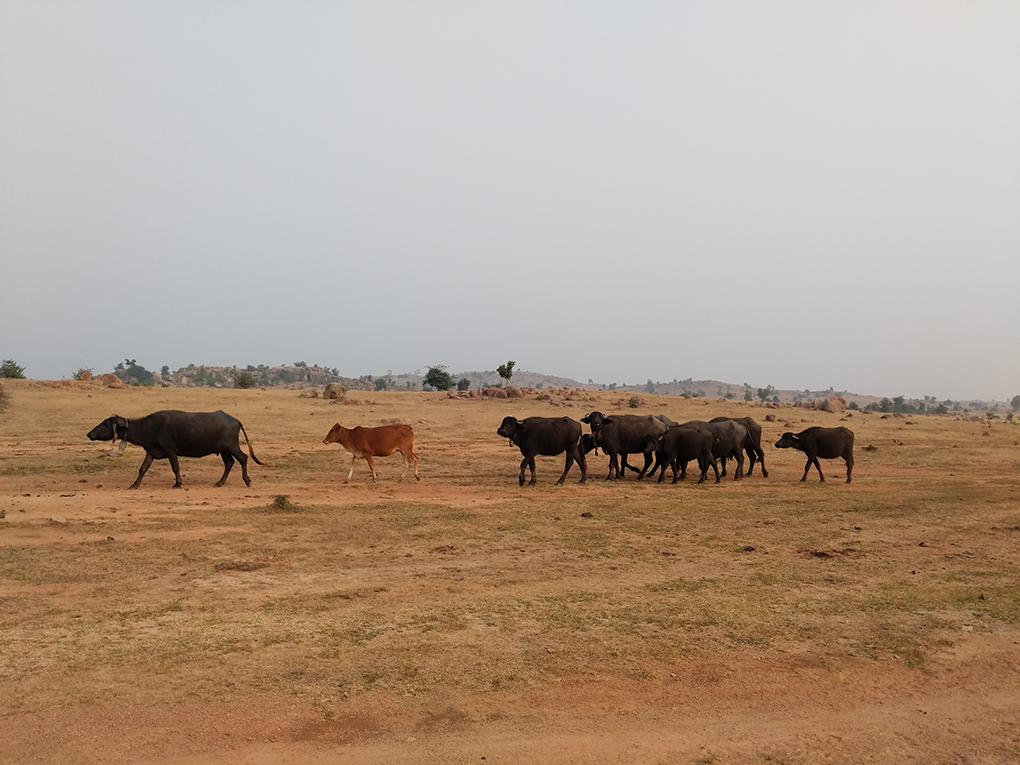
Rajaram Pehalwan, 65, is from the village of Karari in Uttar Pradesh. When he was a child, the thick forest was just a short walk away. “We would see deer and wild boars roaming around. Leopards were seen, and there were even moments of excitement in the village when news came that a tiger had been spotted,” he said.
The forests gradually thinned 25 years ago as demand for wood for construction, furniture and firewood increased. The animals of Pehalwan’s childhood have not been seen since, while nilgai numbers have jumped. With less food available from the fading forests, the antelope are drawn to the fields of wheat, chana (chickpea) and matar (green pea). “There could be more than 1,200 nilgais here [in the area around his village]. Animals that would eat them have gone, and locals cannot hunt them. There is nothing to stop the nilgais from breeding,” Pehalwan said.
In Madhya Pradesh, villagers say nilgais have been spilling over from Uttar Pradesh. Droughts aggravate the tensions, with growing calls to cull nilgai across the region. “People can lose up to 30% of their crop to nilgais and cattle. I have hired five people, paying them INR 6,000 [USD 81] each per month, to patrol my fields in the night,” said Chali Raja Yadav, former sarpanch (head of the village council) at Khanjiya village in Madhya Pradesh. “This is not sustainable. Forest officials should allow a resumption in traditional hunting of these animals,” he said.
Cutting down trees leads to erosion
The loss of forests along the Betwa has contributed to soil erosion and weakened the riverbanks. There are multiple dams and embankments along the river, but where it is free from its confines, erosion is apparent.

Rameshwar lives in Baswa village in Uttar Pradesh and owns two acres of land. A clump of jamun trees once separated the Betwa from his land, but has been cut down. Without the protective buffer of these trees, the banks are being eroded during the monsoons by the fast-flowing river. “I’ve lost around three feet of topsoil, while the river has eaten away some 6-8 feet of the bank… The trees would’ve kept the banks intact. Now, the soil crumbles so easily,” Rameshwar said.
This year, a copious monsoon means the Betwa breached its banks and flooded farms and homes multiple times. The Third Pole spoke with about 150 farmers within 1 km of the riverbank; nearly all had lost crops during the monsoon.
Reforestation attempts
Over the years, multiple schemes have been proposed and hundreds of crores (millions of US dollars) have been spent on reversing the decline of forests. This year, there has been another massive afforestation drive. But such initiatives in Uttar Pradesh have yielded little.
In the degraded Deogarh-Talebehat forest, The Third Pole saw a group of labourers planting 37,000 saplings across 85 hectares. Teak, rosewood, beech, bamboo and other trees were being planted. As we spoke, a herd of stray cattle chomped on previously planted saplings. “There are a lot of cattle here in these forests. We will have to put big stone barriers to keep them away,” said a labourer.
It is this lack of maintenance, coupled with a general lack of transparency, that meant ambitious afforestation schemes have unravelled, said Jitendra Vir Sharma, director of land resources at The Energy and Resources Institute. Since 2016, he said, the Uttar Pradesh government has, on paper, planted more than 62 crore (620 million) saplings. “There has been no attention on maintenance of plantations. It is a sheer waste of money. There needs to be third-party monitoring of this,” Sharma said.
Singh from the Uttar Pradesh Forest Department said 250 million saplings have been planted this year, and 220 million in 2019.
“Only 5% of the saplings survive after two years” he admitted. “It is because of mismanagement and lack of awareness on how to maintain them.”
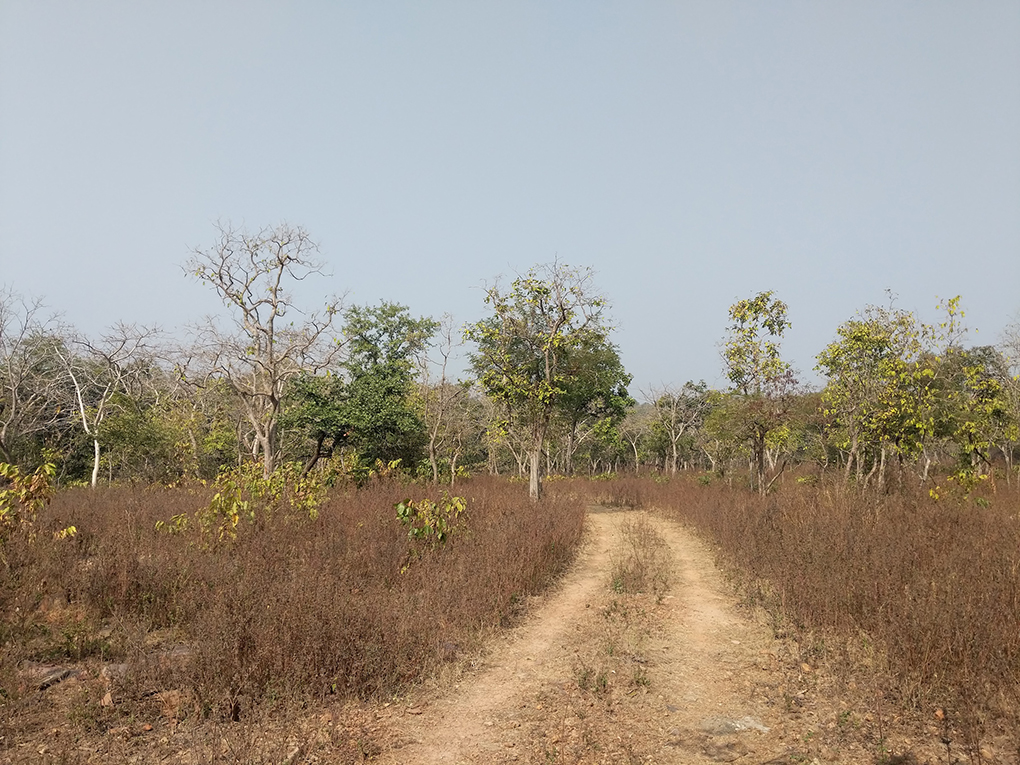
Sharma said that for degraded lands like this, afforestation is not the solution. Instead, governments should deal with the drivers of degradation, such as harvesting wood for fuel and overgrazing. Instead of excluding communities like the Sahariya, Sharma said the government should actively involve them in the protection of the forests. “There should be empowerment of people who are dependent on forests. Once protected, the forest can recover naturally,” he said.
This article has been produced as part of Veditum India Foundation’s Moving Upstream fellowship programme. The authors walked 270 km along the Betwa river in two weeks and intended to capture as many voices as possible. However, due to prevalent conservatism, the low number of women working in the fields close to the river or in forests, and the geographical distance of hamlets from the riverbank, it was difficult to proportionally represent indigenous female voices.
![<p>Erosion by the Betwa river endangers a tree [image by Mohit M. Rao and Astha Choudhary]</p>](https://dialogue.earth/content/uploads/2020/09/Trees_erosion_Betwa_Bundelkhand_india-300x225.jpg)
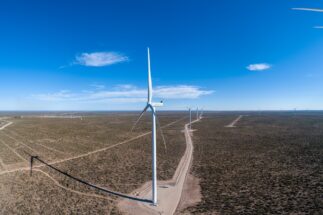




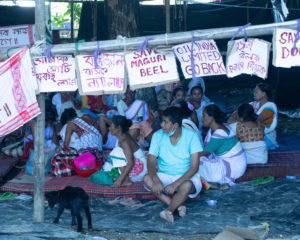
![Bakarwal Gujjar herders ride their ponies to work in Kashmir [image: Alamy]](https://dialogue.earth/content/uploads/2020/09/EM0P7D-300x200.jpg)
